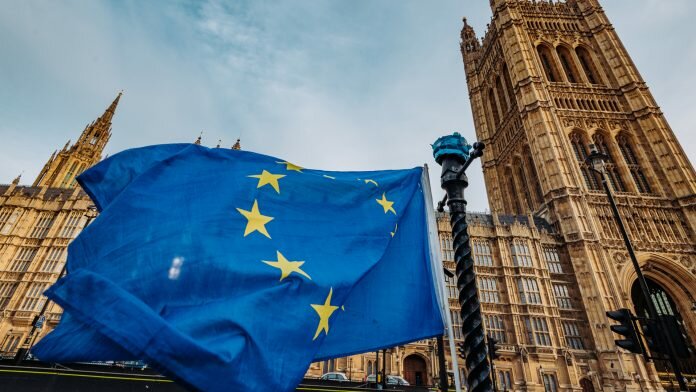
UK Members of Parliament failed to reach a consensus last night on a series of indicative votes on the UK’s ongoing exit from the EU.
MPs voted on eight potential actions for the implementation or otherwise of Brexit, none of which attained a cohesive majority. An unspecified number of the highest-voted amendments is now expected to face a further vote on Monday 1 April; though Prime Minister Theresa May has indicated she would be unlikely to take the Brexit indicative votes results into account when determining the country’s next steps.
Before the vote, May let it be known she intended to resign in time for the “second phase” of negotiations if her withdrawal agreement – which has already failed two votes in the House of Commons by three-figure majorities – passed a third “meaningful vote”, tentatively set for later this week. Speaker of the House John Bercow, however, reiterated that he would not allow May’s withdrawal agreement to be put to the House unchanged for a third time, saying: “In order that there should be no misunderstanding, I wish to make clear that I do expect the government to meet the test of change. They should not seek to circumvent my ruling by means of tabling either a notwithstanding motion or a tabling motion. The table office has been instructed that no such motions will be accepted.”
MPs voted last night on the following options:
- Amendment M, tabled by Labour’s Margaret Beckett, says any Brexit plan agreed by Parliament should be put to a public vote before being implemented – 268 Ayes, 295 Noes;
- Amendment J, tabled by Ken Clarke and Labour MP Hilary Benn, advocated the enshrining in law of pursuing membership of the customs union as a primary objective – 264 Ayes, 272 Noes;
- Amendment K, tabled by the Labour leadership, calls for Labour’s five-point Brexit negotiation objectives to be enshrined in law – 247 Ayes, 307 Noes;
- Amendment D, tabled by a cross-party group including Conservative Nick Boles and Labour’s Stephen Kinnock, advocates a “Norway plus”-style deal whereby the UK leaves the EU proper but remains in the European Economic Area, the single market and enter a temporary customs arrangement until a permanent solution to the issue of Northern Ireland can be found – 188 Ayes, 283 Noes;
- Amendment L, tabled by the SNP’s Joanna Cherry, would see MPs vote on whether to approve a no-deal Brexit if the UK comes within a day of leaving the UK without a deal; if the vote does not pass, Article 50 would be revoked – 184 Ayes, 293 Noes;
- Amendment B, tabled by Conservative John Baron, requests Parliament enact a no-deal Brexit – 160 Ayes, 400 Noes;
- Amendment O, tabled by Conservative Marcus Fysh, lays out “contingent preferential arrangements” under which the UK leaves the EU gradually over a two-year period – 139 Ayes, 422 Noes; and
- Amendment H, tabled by Conservative George Eustice, is similar to amendment D but leaves out the customs arrangement – 65 Ayes, 377 Noes.
The Brexit indicative votes results showed that Amendment M, calling for a “confirmatory vote” in the form of a second referendum, received the highest number of votes. The Labour party whipped its MPs to support amendments F, J, K and M; while amendment D is not officially in line with Labour policy, the party’s MPs were encouraged to vote in favour for it. Labour’s shadow housing minister Melanie Onn resigned in order to vote against amendment M, while three other shadow ministers – Andrew Gwynne, Ian Lavery and Jon Trickett – abstained from voting on a second referendum. Conservative MPs were offered a free vote on all amendments in hopes of staving off resignations: between 10 and 20 Conservative MPs had threatened to resign rather than be compelled to vote against their consciences.
The following amendments were tabled but not put to a vote:
- Amendment A, tabled by Conservative Sir Bill Cash, calls on the government to “respect the will of the people” as expressed three years ago and cancel the further indicative vote scheduled for Monday;
- Amendment C, tabled by John Baron, approves May’s withdrawal agreement but with the proviso that the UK retains the right to exit the backstop arrangement at any time;
- Amendment E, tabled by Conservative Will Quince, calls on the House to respect the result of the 2016 referendum on the basis that to hold another vote would be undemocratic;
- Amendment F, tabled by Labour MP Gareth Snell, supports leaving the EU but remaining in a customs union;
- Amendment G, tabled by the Scottish National Party’s Angus MacNeil and the Conservatives’ Ken Clarke, would see Parliament revoke Article 50 in the event the UK comes within four days of leaving the EU without a deal in place;
- Amendment I, tabled by the SNP’s Westminster leader Ian Blackford, says no deal can pass without the approval of the devolved Scottish Parliament and Welsh Assembly;
- Amendment N, tabled by Conservative Nicky Morgan, is also known as the “Malthouse compromise” and would see the UK leave the EU under the terms of May’s withdrawal agreement, except with unspecified “alternative arrangements” made to replace the backstop; and
- Amendment P, tabled by Marcus Fysh, lays out “contingent reciprocal arrangements” to smooth the process of Brexit if no deal is reached.
Before the indicative votes, MPs voted to approve the extension to Article 50 agreed with the European Council last week, shifting the date of the UK’s exit from the EU from tomorrow to 12 April of 22 May, depending on whether a deal can be agreed in the interim – it was reported yesterday that the EU could be willing to extend Article 50 until 1 April 2020 in certain circumstances. The government lost a bid to cancel the indicative votes by a majority of 331 votes to 227.


















